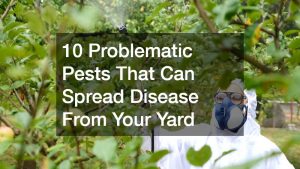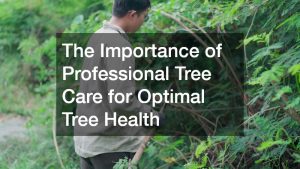Your yard should be a safe, relaxing space, but many common outdoor pests carry diseases that can threaten the health of your family, pets, and even local wildlife. From tiny insects to larger animals, these pests not only damage plants and landscaping but also pose serious health risks if left unchecked. Understanding which pests are most dangerous, how they spread disease, and what steps you can take to prevent them is essential for maintaining a healthy outdoor environment.
1. Mosquito Menace with Big Risks
Mosquitoes are more than just a nuisance—they are carriers of several dangerous diseases, including West Nile virus, Zika, dengue, and even encephalitis. They breed in stagnant water, so even small puddles, clogged gutters, and unused plant saucers can become hot spots for mosquito larvae. Professional mosquito control services can treat breeding areas and reduce adult populations, providing long-term protection. Natural deterrents, such as planting citronella, lavender, or marigolds, can also help keep mosquitoes away, but they are usually most effective when combined with professional intervention. Additionally, wearing protective clothing and using insect repellents can limit exposure during outdoor activities.
Landscaping practices, such as installing water features with circulating pumps, also play a role. Integrating landscape design principles to minimize stagnant water not only enhances the aesthetic of your yard but also limits mosquito breeding grounds, making your outdoor space safer and more enjoyable.
Keep in mind that children are particularly susceptible to bites, which can sometimes lead to serious infections. If symptoms appear after a bite, parents should seek professional evaluation at a pediatric urgent care clinic to ensure timely treatment and peace of mind.
2. Ticks Lurking in the Grass
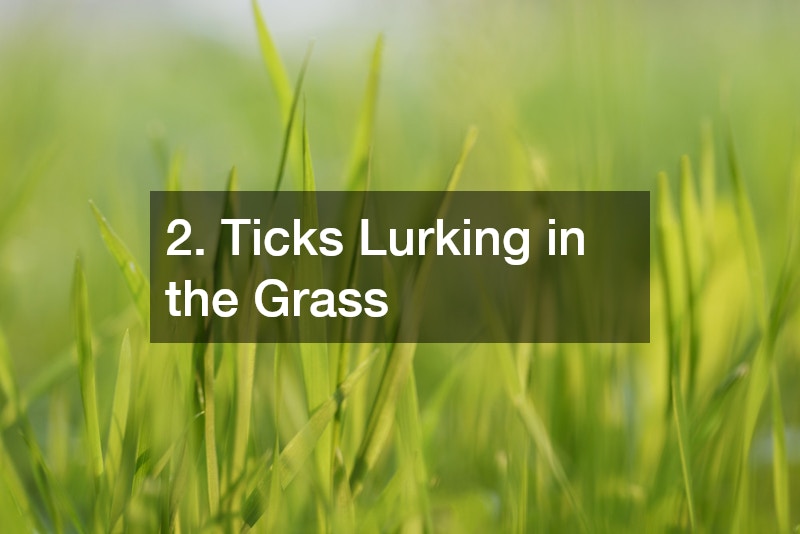
Ticks thrive in tall grass, leaf litter, and wooded areas. They are notorious for spreading Lyme disease, Rocky Mountain spotted fever, and ehrlichiosis, all of which can have serious long-term effects if left untreated. These parasites often attach to pets and humans during outdoor activities, making regular tick checks and preventive care essential.
Maintaining a trimmed lawn and clear pathways is the first line of defense. Overgrown shrubs and piles of leaves should be removed, and professional pest control service can treat yards for ticks, significantly reducing the chance of bites. Pet owners should also consult veterinarians about tick prevention products such as topical treatments or oral medications.
3. Fleas with Serious Consequences
Fleas are tiny but powerful pests that can carry diseases like plague, murine typhus, and tapeworm infections. They often arrive on pets or rodents and multiply rapidly in shaded, moist yard areas. Once established, flea infestations can spread quickly to humans and animals, causing itching, irritation, and potential infections.
Routine yard cleaning is critical. Removing debris, trimming overgrown vegetation, and treating shaded areas with professional pest control service can drastically reduce flea populations. Pets should be regularly treated with flea prevention products, and veterinary guidance ensures both dogs and cats are protected.
Children are particularly susceptible to flea bites, which may require treatment for severe reactions. Dermatology doctors also see patients with skin reactions to flea bites, highlighting the importance of preventive measures. Outdoor areas can be treated with diatomaceous earth or safe insecticides, while landscape design adjustments, such as reducing dense foliage or shaded zones, minimize ideal flea habitats. Keeping your yard clean and using integrated pest management strategies help prevent infestations and protect the health of your family and pets.
4. Rodents on the Move
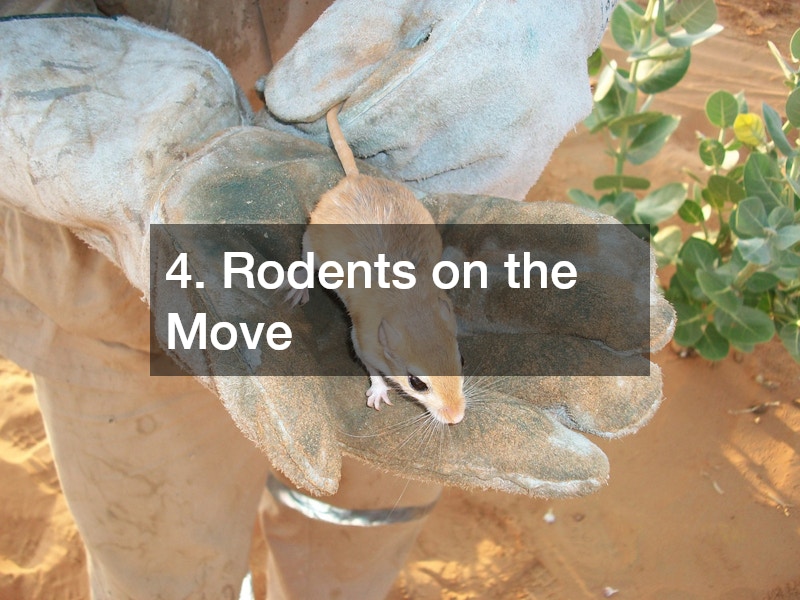
Rodents such as mice and rats are not only destructive to property but are carriers of multiple diseases including hantavirus, leptospirosis, and salmonella. They are attracted to food scraps, compost piles, and cluttered or unsealed structures in yards. Proper fence installation and secure storage of garbage bins and compost areas can limit rodent access. It’s also important to maintain tidy landscaping that eliminates hiding spots, such as piles of leaves, firewood, or dense shrubbery. Pest control service can implement trapping and exclusion methods to remove rodents safely.
Pets interacting with rodents are at risk of disease transmission, making preventive visits to veterinarians essential. Additionally, integrating professional advice into landscape design can reduce areas that encourage rodent activity, such as dense groundcover or poorly maintained gardens. Rodent-proofing sheds, decks, and outdoor storage areas also minimizes entry points. Regular monitoring and proactive removal of attractants keep both humans and pets safe from disease. Children and adults alike should be educated to avoid contact with rodents, as even brief exposure can result in serious health consequences.
5. Chiggers Creating Intense Itching
Chiggers are tiny mites that cause intense skin irritation and, in certain regions, can transmit scrub typhus. They thrive in tall grass, leaf litter, and dense vegetation. Even brief exposure during gardening or play can result in itchy, inflamed bites that may last for days.
Proper yard maintenance is key. Mowing lawns, trimming shrubs, and removing leaf piles reduce chigger habitats. Wearing long sleeves and pants during outdoor activities provides a protective barrier. In areas with persistent chigger populations, professional pest control service treatments can minimize risk.
Children are particularly susceptible to bites. Additionally, landscape design that creates open, sunny areas rather than dense shaded zones helps deter chiggers. Using mulch sparingly and keeping walking paths clear can significantly reduce exposure. Education on chigger habitats and preventive clothing ensures that families can safely enjoy outdoor spaces. Combining personal protection with yard maintenance and targeted treatments is the most effective approach to managing these tiny but troublesome pests.
6. Wasps and Bees Causing Health Hazards
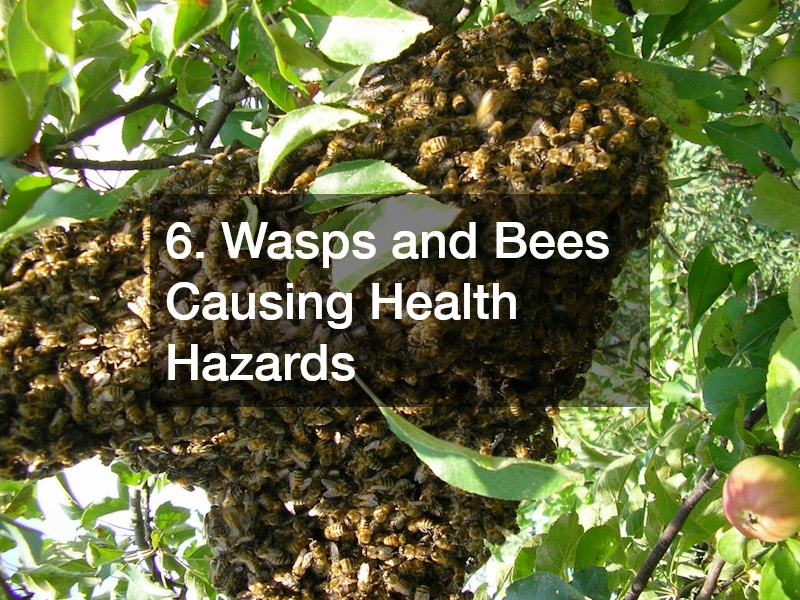
Wasps and bees are often associated with painful stings, but some species can carry bacteria that may lead to infections if stings break the skin. Nests near patios, sheds, or garden structures can increase the risk of encounters. While bees are important pollinators, their presence in high-traffic areas should be managed carefully to reduce health hazards.
Strategic landscape design can discourage nesting. Avoid planting highly fragrant flowers near play areas, maintain tidy gardens, and seal cracks or gaps in structures. For aggressive or large nests, professional removal ensures safety without harming beneficial pollinators. Homeowners with young children or allergy-prone individuals should be especially cautious.
Regular inspections of yards and outdoor structures help identify potential nest sites early. In addition, hardscaping elements like raised patios or seating areas can create safer zones away from nests. For families dealing with stings, consulting a dermatology doctor for infections or allergic reactions is advised. Combining proactive design, professional removal, and awareness of wasp and bee behavior creates a balance between maintaining biodiversity and ensuring outdoor safety.
7. Snails and Slugs Damaging Gardens
Snails and slugs are more than garden nuisances—they can carry parasitic worms such as rat lungworm, which can affect humans and pets. Moist, shaded gardens with dense groundcover provide the ideal environment for these pests, especially during wet seasons. They also damage plants, making management critical for both health and aesthetics.
Professional pest control service can help reduce populations, while physical barriers like copper tape or careful placement of hardscaping contractor elements prevent snails and slugs from entering key garden areas. Composting practices should avoid over-moist areas that attract them. Pets interacting with snails and slugs risk exposure to parasites, so veterinarians recommend keeping animals away from infested zones.
Outdoor safety also includes teaching children to avoid handling these pests. In addition, landscape design that incorporates open, sunlit areas and minimal dense plant cover reduces ideal habitats. Combining preventive gardening, professional treatment, and safe yard planning keeps your family and pets protected while maintaining healthy plants.
8. Squirrels Spreading Hidden Diseases
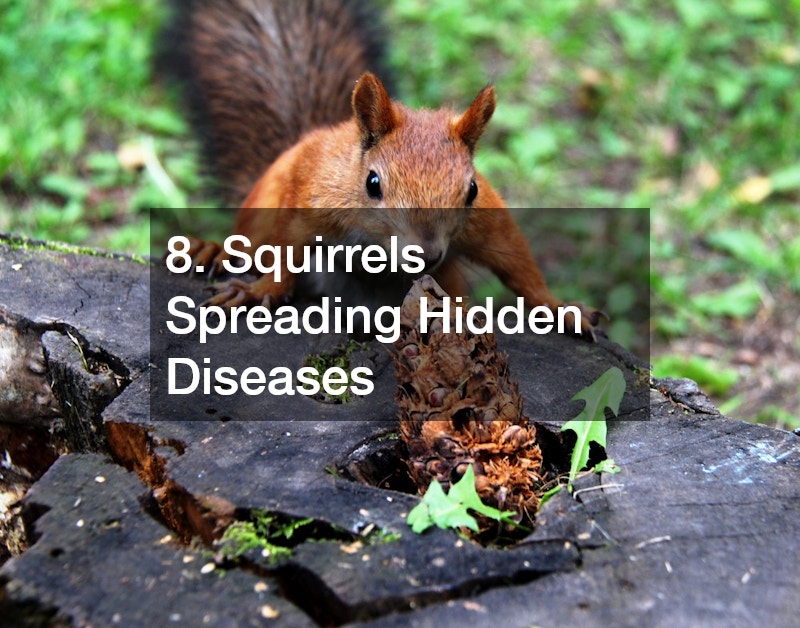
Squirrels may appear harmless, but they can transmit diseases such as leptospirosis, salmonella, and various parasites through droppings and urine. They frequently invade bird feeders, attics, sheds, and compost areas, bringing pathogens closer to humans and pets.
Preventive measures include secure food storage, careful fence installation, and the removal of nesting opportunities in yard structures. Monitoring for signs of infestation and consulting pest control service specialists for humane removal ensures safety. Pets should be kept away from areas where squirrels are active, and veterinarians can provide guidance on monitoring potential exposure.
Landscaping decisions can also limit squirrel access. Trees close to roofs or garden structures can act as bridges for entry, so pruning and strategic landscape design reduce risk. Educating family members about avoiding contact with wildlife further mitigates disease transmission. By combining yard management, professional intervention, and preventive design, squirrels’ health risks can be effectively minimized.
9. Birds and Bird Mites Carrying Disease
Birds themselves can carry diseases like psittacosis and histoplasmosis, while bird mites may infest homes after leaving their nests. Nesting near eaves, patios, or sheds increases the likelihood of exposure. While birds provide ecological benefits, their proximity to human activity can be hazardous.
Professional removal services and proper landscape design can prevent nesting in high-traffic areas. Yard inspections and regular cleaning of bird droppings reduce disease risks. Children and immunocompromised individuals are particularly vulnerable, making preventive measures essential. Using netting, barriers, or relocated feeders can safely redirect bird activity.
Pest management professionals provide targeted solutions that maintain the ecological balance while protecting health. Incorporating hardscape elements such as patios and walkways ensures family activity zones remain safe. Educating families about avoiding contact with birds or mite-infested areas further minimizes exposure and protects the outdoor enjoyment of your yard.
10. Ants and Fire Ants Causing Health Problems
Certain ants, especially fire ants, indirectly spread bacteria from contaminated sources. Their stings can cause infections or severe allergic reactions, requiring medical attention in some cases. Ant colonies often develop in sunny, undisturbed areas, making regular yard monitoring essential.
Professional pest control service treatments combined with proper yard maintenance help reduce ant populations. Fire ants in particular may require multiple treatments to ensure complete eradication. Hardscaping contractor advice on patios, walkways, and seating areas helps minimize ant habitats by reducing soil disturbance and eliminating nesting spots.
Children and pets are at particular risk from stings. Dermatology doctors often treat infections or allergic reactions caused by ants. Regular inspection, professional treatments, and thoughtful yard design all contribute to safer outdoor spaces. Integrating pest management with strategic landscape design ensures that ant infestations are minimized while maintaining an attractive and functional yard.
Managing Wildlife Risks and Animal Encounters
While much of the focus in yards is on insects and small pests, larger wildlife such as raccoons, squirrels, skunks, or even stray dogs can also pose significant health risks. These animals may carry diseases like rabies, leptospirosis, or parasites that can affect both humans and pets. Beyond disease, interactions with aggressive or frightened animals can result in bites or scratches, which may require immediate medical attention.
Maintaining secure boundaries through proper fence installation and limiting food sources such as open compost bins or pet food left outside reduces the likelihood of wildlife entering your yard. Thoughtful landscape design can also minimize hidden shelter areas that attract animals, while hardscaping contractor advice on patios, decks, and storage areas can help keep spaces clear of potential hiding spots.
Despite preventive measures, accidents may still happen. In the case of a serious bite or attack, consulting an animal attack injury attorney ensures you understand your legal rights and options, especially if the incident results in medical expenses or long-term injuries. Regular monitoring of your yard, combined with professional pest control service, helps prevent both smaller pests and larger wildlife from becoming threats.
Protecting Your Yard Structures from Hidden Pests
Yards aren’t just home to visible pests—hidden invaders like termites can silently damage decks, fences, and sheds. These insects don’t typically spread disease, but they compromise structural integrity, which can pose indirect safety hazards. Professional termite control treatments and other such measures can help safeguard both your outdoor spaces and your family’s safety. Routine inspections ensure any issues are caught early, preventing costly repairs and maintaining a healthy, enjoyable yard.
By taking a proactive and comprehensive approach, you can not only safeguard the health of your family and pets but also enhance the overall enjoyment and functionality of your outdoor spaces. A well-planned yard that incorporates thoughtful landscape design, strategic hardscaping, and secure fence installation can naturally reduce areas where pests like mosquitoes, ticks, rodents, and ants thrive. Regular upkeep, including clearing debris, managing moisture, and monitoring for early signs of infestation, ensures that minor problems don’t escalate into serious health risks.

